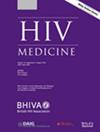Incidence and predictors of attrition from HIV treatment among adults living with HIV in high-caseload facilities following implementation of universal test and treat strategy in Ethiopia: A prospective cohort study
Abstract
Background
The introduction of universal test and treat (UTT) strategy has demonstrated a reduction in attrition in some low-resource settings. UTT was introduced in Ethiopia in 2016. However, there is a paucity of information regarding the magnitude and predictors of attrition from HIV treatment in Ethiopia. This study aims to assess the incidence and predictors of attrition from HIV treatment among adults living with HIV (PLHIV) in high-caseload facilities following the implementation of universal test and treat strategy in Ethiopia from March 2019 to June 2020.
Methods
A prospective cohort of individuals in HIV care from 39 high-caseload facilities in Oromia, Amhara, Tigray, Addis Ababa and Dire Dawa regions of Ethiopia was conducted for 12 months. Participants were adults aged 15 year and older who were first testers recruited for 3 months from March to June 2019. Subsequent follow-up was for 12 months, with data collected on sociodemographic and clinical conditions at baseline, 6 and 12 months and attrition at 6 and 12 months. We defined attrition as discontinuation from follow-up care due to loss to follow-up, dropout or death. Data were collected using Open Data Kit at field level and aggregated centrally. Kaplan–Meier survival analysis was employed to assess survival probability to the time of attrition from treatment. The Cox proportional hazards regression model was used to measure association of baseline predictor variables with the proportion of antiretroviral therapy (ART) patients retained in ART during the follow up period.
Results
The overall incidence rate for attrition from HIV treatment among the study participants during 12 months of follow-up was 5.02 cases per 1000 person-weeks [95% confidence interval (CI): 4.44–5.68 per 1000 person-weeks]. Study participants from health facilities in Oromia and Addis Ababa/Dire Dawa had 68% and 51% higher risk of attrition from HIV treatment compared with participants from the Amhara region, respectively [adjusted hazard ratio (AHR) = 1.68, 95% CI: 1.22–2.32 and AHR = 1.51, 95% CI: 1.05–2.17, respectively]. Participants who did not have a child had a 44% higher risk of attrition compared with those who had a child (AHR = 1.44, 95% CI: 1.12–1.85). Individuals who did not own mobile phone had a 37% higher risk of attrition than those who owned a mobile phone (AHR = 1.37, 95% CI: 1.02–1.83). Ambulatory/bedridden functional status at the time of diagnosis had a 44% higher risk of attrition compared with participants with a working functional status (AHR = 1.44, 95% CI: 1.08–1.92) at any time during the follow-up period.
Conclusion
The overall incidence of attrition among people living with HIV enrolled into HIV treatment was not as high as what was reported by other studies. Independent predictors of attrition were administrative regions in Ethiopia where health facilities are located, not having a child, not owning a mobile phone and being ambulatory/bedridden functional status at the time of diagnosis. Concerted efforts should be taken to reduce the magnitude of attrition from HIV treatment and address its drivers.

 求助内容:
求助内容: 应助结果提醒方式:
应助结果提醒方式:


